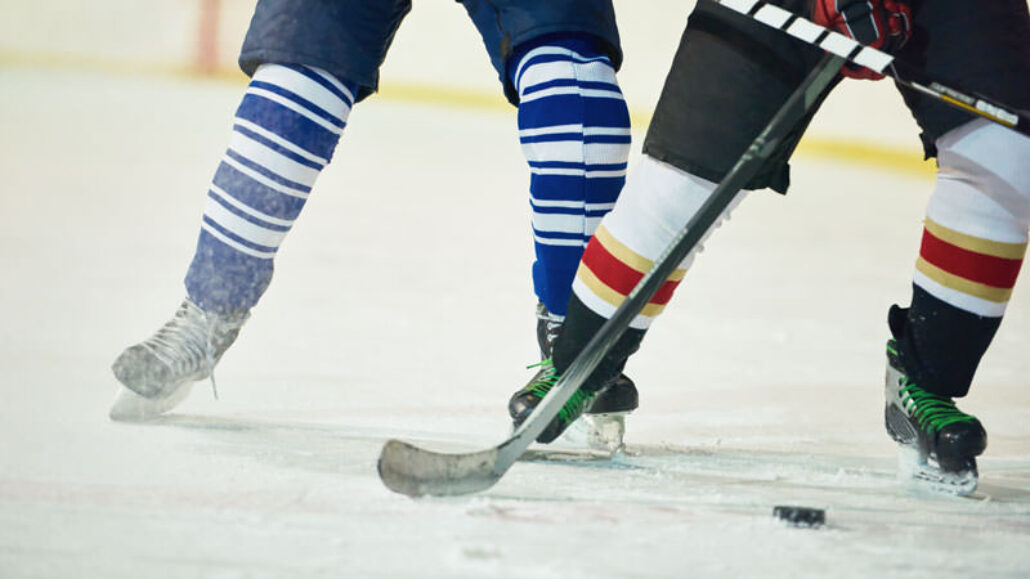Among youth and high school sports, ice hockey is statistically one of the safest. But a good safety ranking can’t eliminate all injuries. We identify and discuss the four most common injuries we treat in young hockey players.
Over the last few years, we have become more aware and concerned about athletic injury risks at every level of competition. Studies have shown that youth hockey has a good safety ranking compared to other high school sports, but injuries still happen. We’ve explained the most common hockey injuries we see, along with the recovery times you can expect.
Injury rates and preventative safety measures are being studied for every sport, and our Summit Orthopedics sports medicine experts follow this research closely. With the new information we’ve learned, we have been able to expand our services. In addition to treating sports patients with the most effective therapies available, we are also providing education and training to help athletes avoid preventable injuries. When it comes to hockey, the injuries we treat reflect national statistics about the four most common injuries in the sport.
- Concussion injury is one of today’s hot-button topics in sports medicine, and is the most common injury among hockey players. A player doesn’t have to lose consciousness to suffer a concussion. Symptoms can be subtle, including dizziness, headache, irritability, and difficulty focusing. Young athletes may be more vulnerable to concussions because they have a larger head-to-body ratio and weaker neck muscles. After an injury, the brain needs rest to recover, and children should not resume their sport until they have passed a series of assessments. In the majority of cases, this rest period lasts for about three weeks. Fitted and properly fastened helmets and face masks help reduce risks. Children also benefit from “safe play” coaching and avoiding direct head contact.
- Knee injuries. The second most frequent injury among hockey players is damage to the knee when the medial collateral ligament (MCL) on the inner part of the knee stretches or tears. The good news is that this injury seldom requires surgery, though it is painful. MCL injuries can include damage to growth plates, so it’s important for us to examine younger children to rule out this possibility.
- Shoulder injuries. Players who collide with the boards or fall on the ice can sustain damage to their collarbone or the acromioclavicular joint (AC joint) in the shoulder. Most young athletes will make a full recovery without surgery, but they should be examined and treated by one of our sports medicine physicians to make sure the injury heals properly.
- Ankle injuries. The ankle injuries we see most often are torque injuries resulting from the combination of high speeds and quick direction changes of skaters on the ice. Most of these injuries can be treated nonsurgically, but require the longest healing period of the four injury types.
The most important preventative measures players can take are to wear the appropriate protective equipment and adhere to the game regulations. If, despite precautions, your young hockey player is injured, our sports medicine specialists have the knowledge, expertise, and compassionate dedication to evaluate injuries and develop a treatment plan that will help your son or daughter heal safely before re-entering the rink.
Summit Orthopedics offers comprehensive sports medicine expertise
From Olympians to pro athletes to kids in youth sports and those that just want to be more active—Summit Orthopedics delivers expert care by fellowship-trained sports medicine physicians. If you are recently injured or concerned about ongoing pain, Summit Orthopedics sports medicine specialists have the expertise to evaluate your discomfort and develop a plan to quickly and safely help you get back to being active.
Start your journey to stronger, healthier athletic condition. Find your sports medicine expert, request an appointment online, or call us at (651) 968–5201 to schedule a sports medicine consultation.
Summit has convenient locations across the Minneapolis-St. Paul metro area, serving Minnesota and western Wisconsin. We have state-of-the-art centers for comprehensive orthopedic care in Eagan, MN, Vadnais Heights, MN, Plymouth, MN, and Woodbury, MN, as well as several additional community clinics.
More resources for you
- Know The Most Common Soccer Injuries
- Baseball: Know The Most Common Injury Risks
- High School Basketball Injury Prevention
- What Are The Most Common Hockey Hand and Wrist Injuries?
- Hockey Strengthening Exercises to Try Before You Head Out on The Ice
